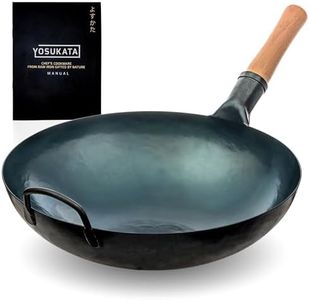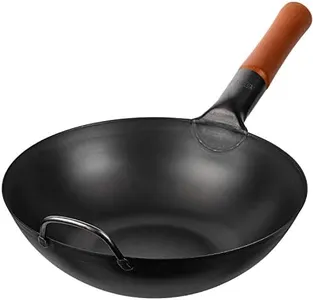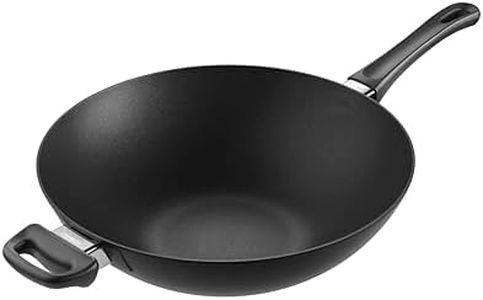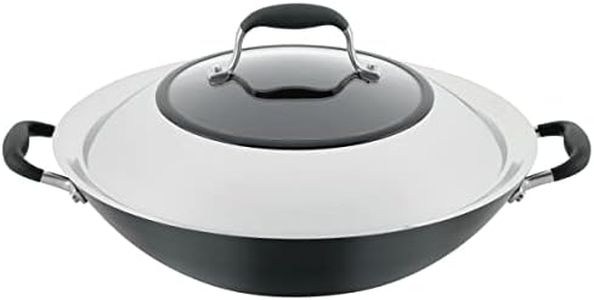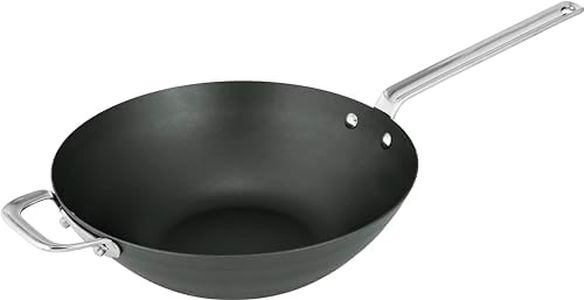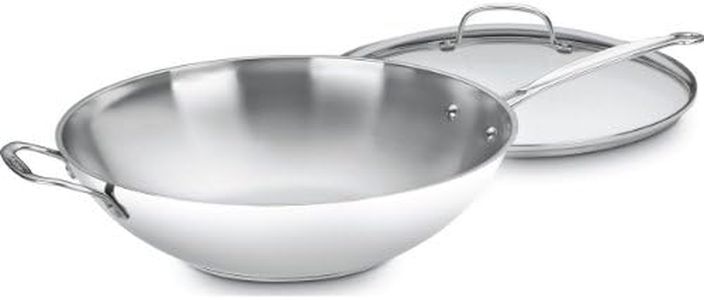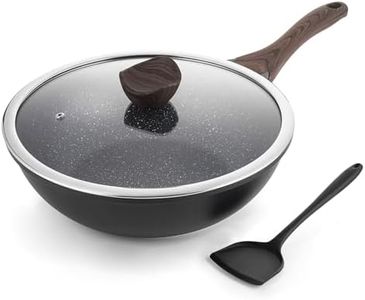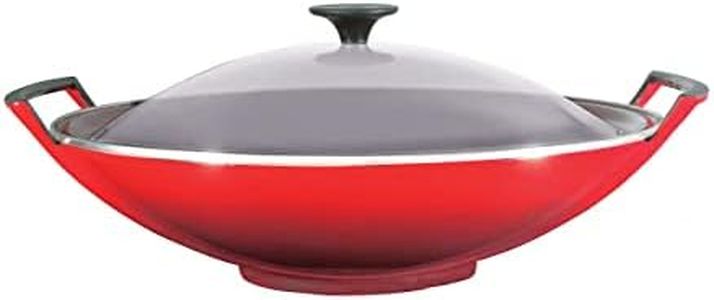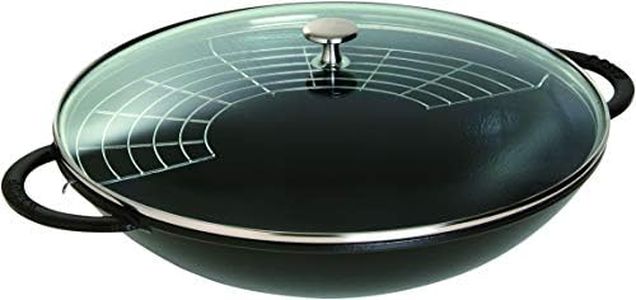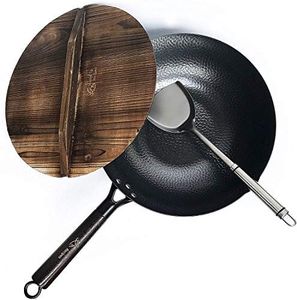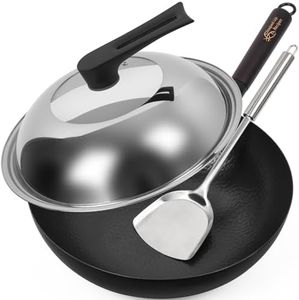We Use CookiesWe use cookies to enhance the security, performance,
functionality and for analytical and promotional activities. By continuing to browse this site you
are agreeing to our privacy policy
10 Best Woks
From leading brands and best sellers available on the web.By clicking on a link to a third party's website, log data is shared with that third party.
Buying Guide for the Best Woks
Choosing the right wok can make a big difference in your kitchen, especially if you enjoy stir-frying or making a variety of Asian dishes. The key is to think about how you cook, the type of stove you use, and how much maintenance you want to do. Not all woks are the same, so understanding the main features will help you find one that suits your cooking style and makes mealtime easier and more enjoyable.MaterialThe material of a wok determines how quickly it heats up, how evenly it distributes heat, and how much effort it will take to keep it in good shape. The most common materials are carbon steel, cast iron, and stainless steel. Carbon steel heats up quickly, cools down fast, and is favored for its classic feel and performance, but it does need to be seasoned and looked after to prevent rust. Cast iron woks are heavier, hold heat longer, and can develop a nonstick surface over time, but they also require careful seasoning and are more prone to breaking if dropped. Stainless steel woks are easy to maintain and durable but may not distribute heat as evenly as the other two. If you like traditional high-heat cooking and don't mind seasoning, carbon steel or cast iron might suit you; if you want a low-maintenance option, stainless steel is the way to go.
Shape and Bottom TypeWoks come with either rounded or flat bottoms. A round-bottomed wok is ideal for traditional gas stoves because it allows for quick movement of food and heat. A flat-bottomed wok, on the other hand, sits more securely on modern stovetops, especially electric or induction ones, and provides more contact with the heat source. To decide which wok shape is right for you, look at your stove: gas stoves often work well with round-bottomed woks (sometimes with a wok ring for stability), while flat-bottomed woks are better for most electric and induction ranges.
SizeWok size is typically measured by its diameter, with common sizes ranging from 10 to 16 inches. Smaller woks (10-12 inches) are ideal for cooking one or two servings and are easier to handle and store. Medium sizes (about 12-14 inches) are versatile and work well for most families, letting you cook for three to five people. Larger woks (14-16 inches and up) are best if you often cook for groups or want room to toss lots of food without spilling. Consider how many people you usually cook for and how much space you have, as a wok that's too small or too big can make cooking less efficient.
Handle TypeWoks feature different handle designs: traditional round-bottomed woks usually come with two small loop handles, while flat-bottomed woks often have one long handle and a small helper handle. The long handle is useful for tossing and stirring food over high heat, giving you better control, while the helper handle helps with lifting a heavy, food-filled wok off the stove. If you often stir-fry or toss ingredients over heat, look for a wok with a long handle and make sure the handle material stays cool to the touch for safety.
WeightThe weight of a wok affects how easy it is to move, toss, and stir ingredients. Lightweight woks made from carbon steel are easier to handle and toss, even with one hand, but might feel less steady on the stovetop. Heavier cast iron woks are great for holding heat and develop flavor over time, but they require more effort to lift and can be hard to manage for some users. Think about your comfort with lifting and moving heavy cookware and choose a wok weight that feels manageable for you.
Coating or Seasoning RequirementSome woks come with nonstick coatings, while others (like traditional carbon steel and cast iron) need to be seasoned. Seasoning involves coating the pan with oil and heating it to build up a natural, nonstick surface over time. Nonstick woks are easier to clean and require less oil, but the nonstick surface may wear out eventually and is not suitable for very high-heat cooking. Seasoned woks need a bit more care but reward you with better flavor and durability. If you prefer easy cleanup and low maintenance, a nonstick wok might be best. If you like authentic cooking and don't mind caring for your cookware, consider a wok that needs to be seasoned.
